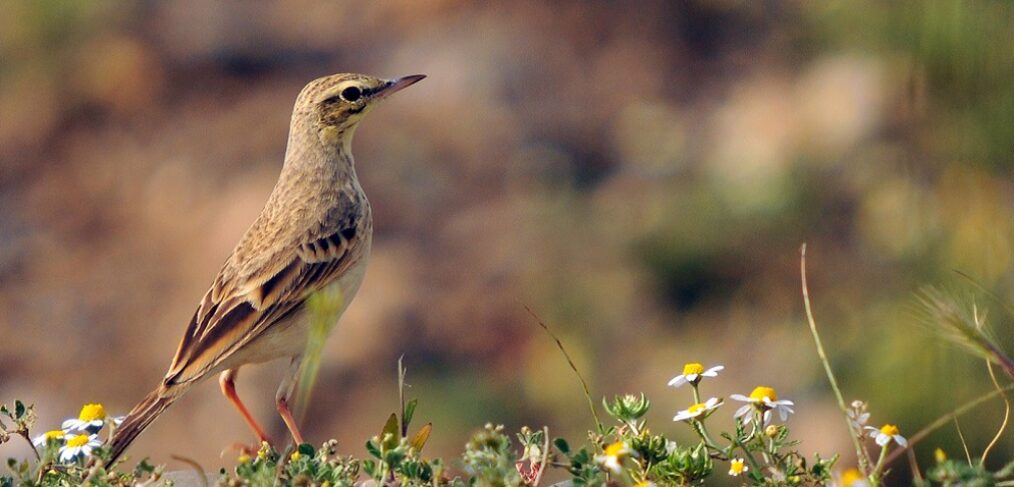
species of the week #78- tawny pipit
The fidgeter among the birds is the Tawny Pipit. Anyone who has ever been able to observe it foraging knows why, because it always starts running in search of food, stops abruptly, pecks, watches and sprints on. When it spots an insect, it even jumps vertically into the air. Occasionally it is equally frantic in its choice of mate. Polygamy is more common among tawny pipits. In this case, the nests of the two females are often less than 15 metres apart. In Germany, the Tawny Pipit can only be observed between April and September, as it spends the winter in the warm south.
| Distribution status in Rhineland-Palatinate | Extremely rare |
| Remaining deposits | North Palatinate uplands |
| Last sighting in Rhineland-palatinate | 2018 near Siegelbach |
| Habitat | Open, almost vegetation-free fallow land |
| Threat | Habitat loss, insect mortality |
Its long legs immediately indicate that the Tawny Pipit is related to stilts. The long tail is also a clear characteristic. Adult Tawny Pipits have a sandy brown-grey coloured back, their breast and belly are white. The sides of the breast are often delicately streaked. On the wings, the middle arm coverts are darker. The clear white stripe over the eyes is conspicuous.
As a pioneer species, the Tawny Pipit lives in open, warm and dry habitats with a mosaic of sandy areas with little vegetation for foraging and areas with grass and low herbaceous vegetation to build its nest on the ground. It needs individual young woody plants in the vicinity to sing.
In Germany, due to the loss of natural fallows, it occurs almost exclusively in secondary habitats, especially in the area of former open-cast lignite mines and military training areas. In addition, sand and gravel pits as well as industrial wastelands and airfields are occasionally colonised. In the past, the Pipit also occurred in heaths and dune areas, on sandy fields, clear-cuts and burnt areas in pine forests.
The species feeds on insects, especially beetles, grasshoppers, bipeds and ants. Butterfly caterpillars also play an important role in rearing the young. Habitat loss and the decline of insect populations have led to a considerable collapse of populations. Currently, there are only 550 to 900 breeding pairs left in Germany.
Click here for more exciting species
Image: By Dûrzan cîrano – Own work, CC BY-SA 3.0, https://commons.wikimedia.org/w/index.php?curid=3223347
